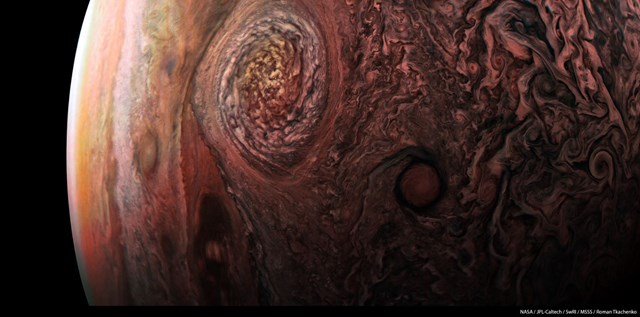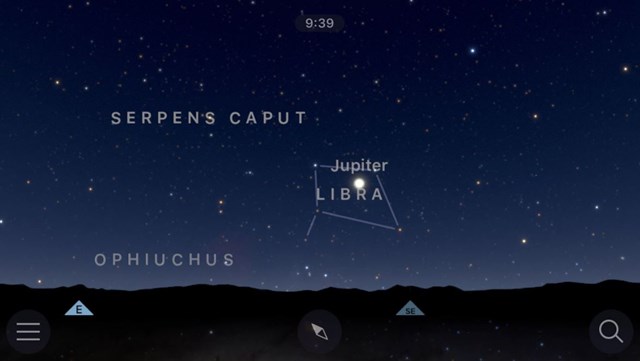
(NASA/JPL-Caltech/SwRI/MSSS/Roman Tkachenko)
Walk away from Facebook, nix the porch light and stroll outside to enjoy the sky tonight. The king of the planets stays very bright throughout this month and reaches “opposition” on Tuesday, which means the planet with the big red spot will be very bright in the southeast sky.
Opposition occurs when Jupiter and the sun are opposite one another from our earthly perspective. Essentially, we revel in a “full” Jupiter — just like a full moon — which can be seen throughout May at -2.5 magnitude (very bright) in the constellation Libra in the southeast after sundown.
Jupiter ascends the southeast sky beginning around 8 p.m., while the sun sets in the west. As the night grows darker, the large gaseous planet becomes an exceptionally bright spot. Like working the overnight third shift, the planet now stays up all night.

On Tuesday, Jupiter can be seen in the constellation Libra in the southeast sky after 8 p.m. (Fifth Star Labs/SkyGuide)
Throughout the night you will see Jupiter climb higher toward the south (it’s due south at 1:10 a.m., according to the Naval Observatory) and then descend toward the west, where the large planet sets at 6:18 a.m. — about 17 minutes after sunrise. If you’re an early riser, you can find Jupiter in the western sky before dawn.
From Earth, Jupiter appears as a muted bright spot in the sky, but this giant planet sports a titanic personality.
NASA’s Juno probe is on tour around the planet and sending back images once unimaginable. It captured scenes of massive cyclones from the planet’s south and north pole region — which look like a caffeinated version of Vincent Van Gogh’s “The Starry Night.”
Last month, NASA released a 3-D flyover of Jupiter’s north pole region taken by the spacecraft’s Jovian InfraRed Auroral Mapper instrument. The tool captured light from deep inside Jupiter, as it studied the weather 30 to 45 miles below the gassy planet’s cloud tops. In March, Juno scientists published results in the journal Nature, which provided gravity measurements and explained the planet’s mysterious zones and belts.
“Galileo viewed the stripes on Jupiter more than 400 years ago,” said Yohai Kaspi, Juno co-investigator from the Weizmann Institute of Science in Israel, who led research for the Nature paper.
“Until now, we only had a superficial understanding of them and have been able to relate these stripes to cloud features along Jupiter’s jets,” Kaspi said. “Now … we know how deep the jets extend and what their structure is beneath the visible clouds. It’s like going from a 2-D picture to a 3-D version in high definition.”
